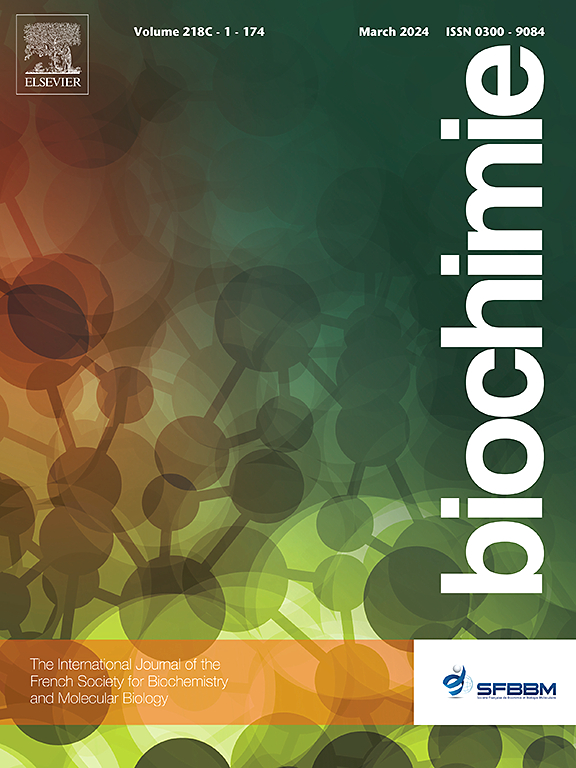毒鼠血小板聚集丝氨酸蛋白酶PA-BJ对细胞和血浆蛋白的相互作用和裂解作用。
IF 3
3区 生物学
Q2 BIOCHEMISTRY & MOLECULAR BIOLOGY
引用次数: 0
摘要
PA-BJ是一种丝氨酸蛋白酶,它通过激活蛋白酶激活的受体PAR-1和PAR-4来触发血小板聚集和颗粒分泌,而不需要凝血纤维蛋白原。这些受体在内皮细胞中也有相关作用,然而,PA-BJ与其他膜结合或可溶靶点的相互作用尚不清楚。我们在体外研究了PA-BJ对内皮细胞受体、细胞骨架和凝血蛋白的活性,并显示了其对纤维蛋白原和蛋白C的降解,以及对肌动蛋白、EPCR、PAR-1和血栓调节蛋白的有限蛋白水解。抗凝血酶、因子XI和XIII及蛋白S未被PA-BJ切割。此外,通过表面等离子体共振,PA-BJ被证明与肌动蛋白、EPCR、纤维蛋白原、PAR-1和凝血调节蛋白结合,其解离常数(KD)在微摩尔范围内。考虑到这些蛋白在血液凝固和维持内皮完整性的途径中起着关键作用,PA-BJ对它们的结合和裂解可能参与了黄颡鱼中毒过程中止血和细胞通透性的改变。本文章由计算机程序翻译,如有差异,请以英文原文为准。
Interaction and cleavage of cell and plasma proteins by the platelet-aggregating serine protease PA-BJ of Bothrops jararaca venom
PA-BJ is a serine protease present in Bothrops jararaca venom that triggers platelet aggregation and granule secretion by activating the protease-activated receptors PAR-1 and PAR-4, without clotting fibrinogen. These receptors also have a relevant role in endothelial cells, however, the interaction of PA-BJ with other membrane-bound or soluble targets is not known. Here we explored the activity of PA-BJ on endothelial cell receptor, cytoskeleton, and coagulation proteins in vitro, and show the degradation of fibrinogen and protein C, and the limited proteolysis of actin, EPCR, PAR-1, and thrombomodulin. Antithrombin, factors XI and XIII and protein S were not cleaved by PA-BJ. Moreover, using surface plasmon resonance PA-BJ was demonstrated to bind to actin, EPCR, fibrinogen, PAR-1, and thrombomodulin, with dissociation constants (KD) in the micromolar range. Considering that these proteins play critical roles in pathways of blood coagulation and maintenance of endothelium integrity, their binding and cleavage by PA-BJ could contribute to the alterations in hemostasis and cell permeability observed in B. jararaca envenomation process.
求助全文
通过发布文献求助,成功后即可免费获取论文全文。
去求助
来源期刊

Biochimie
生物-生化与分子生物学
CiteScore
7.20
自引率
2.60%
发文量
219
审稿时长
40 days
期刊介绍:
Biochimie publishes original research articles, short communications, review articles, graphical reviews, mini-reviews, and hypotheses in the broad areas of biology, including biochemistry, enzymology, molecular and cell biology, metabolic regulation, genetics, immunology, microbiology, structural biology, genomics, proteomics, and molecular mechanisms of disease. Biochimie publishes exclusively in English.
Articles are subject to peer review, and must satisfy the requirements of originality, high scientific integrity and general interest to a broad range of readers. Submissions that are judged to be of sound scientific and technical quality but do not fully satisfy the requirements for publication in Biochimie may benefit from a transfer service to a more suitable journal within the same subject area.
 求助内容:
求助内容: 应助结果提醒方式:
应助结果提醒方式:


